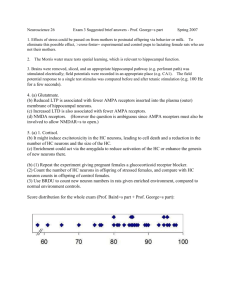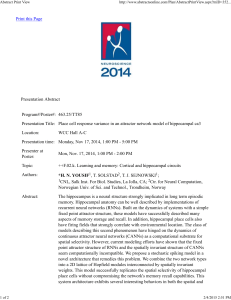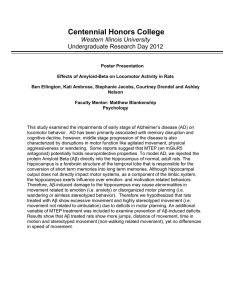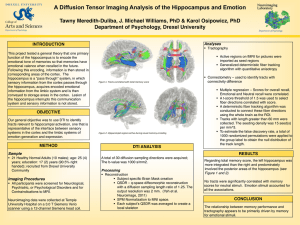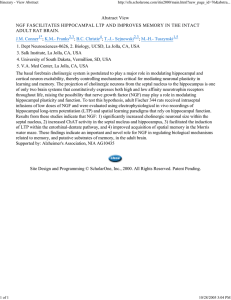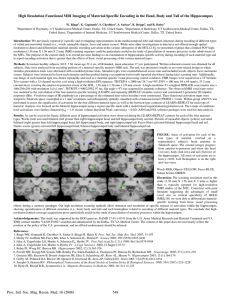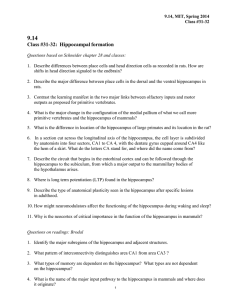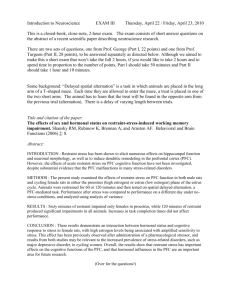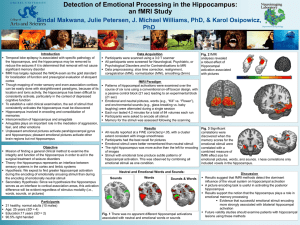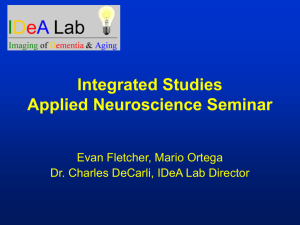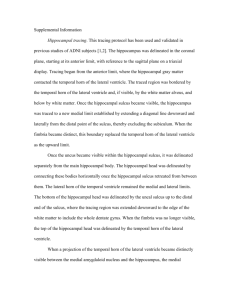Hippocampal **Time Cells** Bridge the Gap in Memory for
advertisement
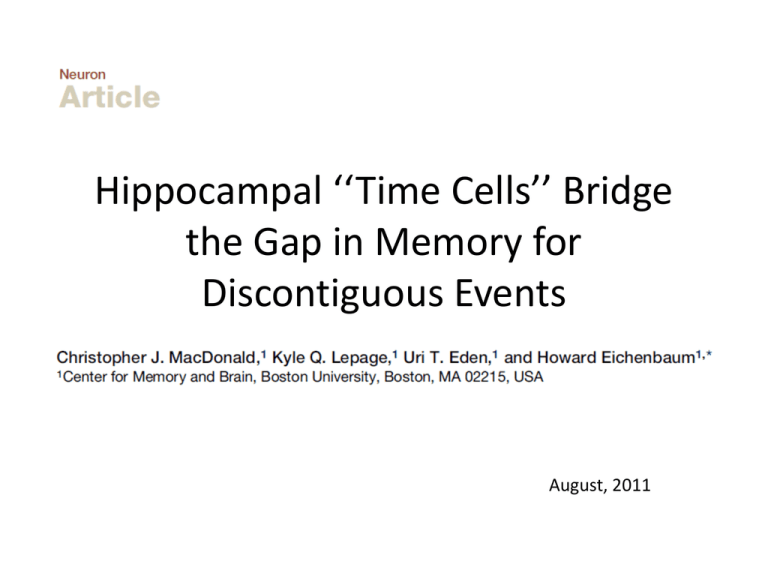
Hippocampal ‘‘Time Cells’’ Bridge the Gap in Memory for Discontiguous Events August, 2011 About the author – Howard Eichenbaum • Research Interests: • The hippocampus plays a critical role in memory formation, but our understanding of just what the hippocampus does and how it performs its functions are still issues of considerable controversy. To enhance our knowledge about hippocampal function, we are pursuing a combination of neuropsychological studies of the nature of memory loss in animals with damage to the hippocampus and related cortical areas, and we are pursuing electrophysiological recording studies that seek to determine how information is represented by the hippocampus and associated cortical areas. Introduction • A fundamental feature of episodic memory is the temporal organization of serial events that compose a unique experience. • Considerable data indicate that the hippocampus is critical to episodic memory in human and animals. • ‘Place cells’ was found in hippocampus. Question • How do hippocampal neurons represent the temporal organization of extended experiences and bridge temporal gaps between discontiguous events? Method • • 4 Rats 333 putative pyramidal neurons were isolated in the pyramidal cell layer of dorsal CA1. Results Results Results • They next examined whether time cells consistently represented absolute or relative time within the delay when the duration of that period was altered. For two rats, the delay in the first block was approximately the standard 10 s. The second block of trials began with an abrupt and approximate doubling of the delay. In the third block the delay was returned to the standard. For the third rat the first delay was 5.7 s, the second 11.6 s, and the third 19.8 s. Results Results Results Conclusion • A large proportion of hippocampal neurons are engaged during performance of a sequence memory task, just as a large fraction of hippocampal neurons are place cells when rats are engaged in spatial exploration • Time cells fire at discrete moments during ‘‘empty’’ periods in a temporally organized memory, much as place cells encode discrete locations devoid of specific stimuli as animals traverse an open space • Hippocampal neural activity signals the nature and timing of salient events that occur at particular moments in temporal sequences, just as place cells encode specific events in the locations they occur in space • Time cells disambiguate overlapping sequence memories, just as place cells disambiguate overlapping routes through a maze • Time cells partially ‘‘retime’’ when a key temporal parameter is altered, just as place cells partially ‘‘remap’’ when critical spatial cues are altered Thank you!
